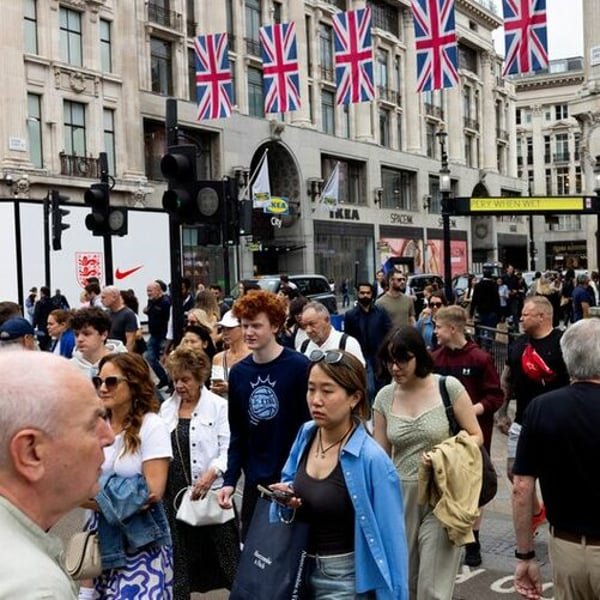Published
September 5, 2025
The UK’s Office for National Statistics released its retail sales figures for July on Friday and they were generally good but with reasons for caution too.

On the same day, BDO’s latest High Street sales Tracker also had some brighter news regarding August sales.
But looking only at those official figures for the previous month, sales volumes rose by 0.6% month on month following a 0.3% rise in June. And they rose 1.1% year on year, although volumes were down by 2.2% compared to their pre-pandemic level in February 2020. Analysts had expected that 0.6% figure to be a rise of only 0.2%.
The good news for e-tailers and the fashion sector was that non-store retailers and clothing stores sales volumes grew more strongly in July, which retailers attributed to new products, good weather, and an increase resulting from the UEFA Women’s Euro 2025 tournament.
In fact, textile, clothing and footwear volumes were up around 2.5%, the same figure as the increase for non-store retailers. The fashion sector’s contribution helped non-food store volumes rise 0.6% overall.
By value, the amount spent online rose by 2% month on month and by 3.7% year on year, while total spend – the sum of in-store and online sales – rose by 1% over the month.
What are people buying?
It’s clear where consumers were spending their money. Deann Evans, Managing Director, EMEA, at Shopify, said that “outdoor activities remained front of mind for UK consumers, with Pop-Up Tents rising by 169.1%, Footballs by 94.5%, and Pool Toys by 65.9% in July (compared to June). Summer events and cultural moments also continued to inspire consumer spending, with the Oasis Live 25 Tour likely a key motivator behind Bucket Hats and Parkas rising by 17.2% and 16.1%, respectively.
“Despite July seeing summer holidays in full swing, ‘back to school’ is already on the radar of parents in the UK. Compared to June, sales of School Uniforms rose by almost 500% last month. Consumers are evidently keen to prepare early and take advantage of early sales. This is perhaps unsurprising given our 2024 UK State of Commerce Report found two-thirds (65%) of UK consumers shop during sales specifically to save money.”
As for analysts, they welcomed Friday’s figures but remained cautious in their overall assessment.
For instance, Kien Tan, Senior Retail Adviser at PwC, said: “While July’s year-on-year sales growth was similar to June’s and an improvement on May, sales growth has fallen back materially since March and April, confirming that consumer spending had indeed been pulled forward by the warm weather earlier in the spring. Overall retail sales volumes have now been below pre-pandemic levels for three years, suggesting that consumer demand has yet to recover despite the population growth over the last five years.
“The main bright spot for the sector was fashion… [but] despite bright spots, it’s clear that the momentum in retail spending is slowing”.
And Jacqui Baker, head of retail at RSM UK, said: “The hottest summer on record combined with sporting events, concerts, and the usual influx of overseas visitors brought good results for the retail sector. The Oasis reunion in particular provided a boost to hotels, pubs and retailers as fans kitted out in new outfits for the headline event.
“The positive trend remains intact. Retail sales have grown strongly in the last two months following the tax and tariff disruption in April.
“Despite a small dip in consumer confidence in July, overall, it appears to be ticking up. But there’s every possibility that this progress could be undone with ongoing speculation and uncertainty over tax rises in the lead up to the later than expected Budget. This uncertainty could be a big hit to the all-important Golden Quarter.”
And Cande Cooper, retail partner at Deloitte, added: “While inflation persists, particularly in food, we are seeing consumers prioritising small luxuries such as clothing and beauty, as well as spending on experiences.
“The outlook for retail is a mixed bag. While July sales growth was strong, and non-store retailers did well, many consumers are expecting to spend less on both essentials and discretionary items in Q3 2025. To continue enticing price-sensitive consumers to spend, retailers need to respond to changing customer preferences by offering competitive pricing and focusing on value.”
Copyright © 2025 FashionNetwork.com All rights reserved.

